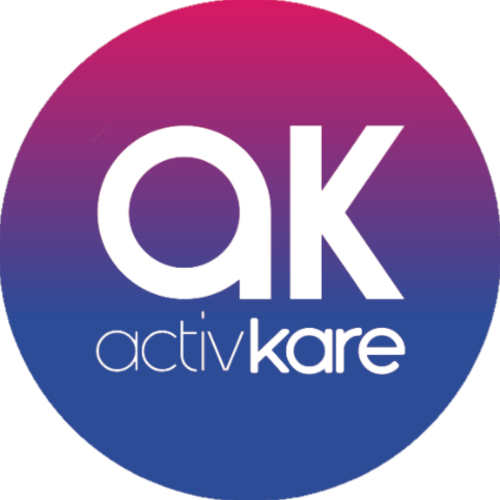Living with an overactive bladder (OAB) can feel like a perpetual battle against your own body, with bladder leaks and frequent trips to the bathroom disrupting daily life.
However, there is hope. Beyond medical interventions, lifestyle modifications, including diet, exercise, and mindful fluid intake, can play a crucial role in managing OAB symptoms. Inspired by ActivKare's dedication to improving the quality of life for those dealing with incontinence, let's delve deeper into how these changes can offer relief.
Dietary Adjustments for OAB
Understanding Bladder Irritants
Certain foods and beverages can exacerbate OAB symptoms by irritating the bladder. Caffeine, for instance, is a diuretic that increases urine production, while spicy foods and acidic fruits can irritate the bladder lining, increasing urgency.
Tips for a Bladder-Friendly Diet:
- Identify and Avoid Triggers: Keep a food diary to identify potential triggers. Common irritants include caffeine, alcohol, chocolate, spicy foods, acidic fruits, and artificial sweeteners.
- Increase Fiber Intake: A high-fibre diet prevents constipation, which is crucial since constipation can worsen OAB symptoms. Incorporate foods like whole grains, legumes, vegetables, and fruits into your meals.
- Stay Hydrated Wisely: While it's important to avoid dehydration, excessive fluid intake can trigger OAB symptoms. Aim for about 6 to 8 glasses of water a day, but adjust based on your body's reactions and activities.
Nutrient-Rich Foods for Bladder Health
Incorporating foods rich in certain nutrients can support overall bladder health:
- Magnesium: A magnesium-rich diet can help reduce bladder muscle spasms. Foods high in magnesium include almonds, bananas, and leafy green vegetables.
- Vitamin D: Emerging research suggests vitamin D may play a role in muscle and nerve health, including those of the pelvic floor and bladder. Consider vitamin D-rich foods like fatty fish and fortified milk.
The Role of Exercise in Managing OAB

Pelvic Floor Exercises
Pelvic floor exercises, or Kegels, are critical for strengthening the muscles that help control urination. Regularly performing these exercises can improve pelvic floor strength, potentially reducing symptoms of urgency and leaks.
General Physical Activity for Weight Management
Maintaining a healthy weight through regular exercise can have several benefits for individuals with OAB. Excess weight can increase abdominal pressure, exacerbating bladder leaks and urgency. Incorporate activities like walking, cycling, or swimming into your routine—aim for at least 30 minutes of moderate exercise most days of the week.
Fluid Management Techniques
While it might seem counterintuitive for those with a condition characterized by frequent urination, proper hydration is crucial. The key is to balance fluid intake to avoid bladder irritation without leading to dehydration.
Tactics for Smart Hydration:
- Evenly Distribute Fluid Intake: Drink fluids slowly throughout the day instead of large amounts at once to avoid overwhelming your bladder.
- Limit Fluids Before Bedtime: Reduce fluid intake 2-3 hours before bedtime to minimize nighttime bathroom visits.
- Choose Your Beverages Wisely: Be mindful of drinks that might irritate your bladder. Water is always the best choice, but if you're looking for variety, herbal teas can be a bladder-friendly alternative.
The Impact of Nutrition on Fluid Balance
Your diet can indirectly affect fluid balance and OAB symptoms. Foods with high water content, such as cucumbers, celery, and watermelon, contribute to hydration without significantly increasing the volume of urine, making them excellent choices for those managing OAB.
Lifestyle Balancing Act

Adopting these changes can seem overwhelming at first. It’s essential to approach adjustments gradually and celebrate the small victories along the way. Every positive change, no matter how small, can contribute to better managing overactive bladder symptoms.
ActivKare's Role in Your Journey
For those navigating the daily challenges of OAB and bladder leaks, ActivKare offers more than just products; it offers a partnership. For instance, ActivKare’s Afex® Male Incontinence Starter Kit demonstrates the brand’s commitment to comfort, effectiveness, and discretion, allowing individuals to regain confidence and lead active lives without constant worry about bladder leaks.
As mentioned on ActivKare’s platform, users like Jim F. have experienced significant improvements. He lauds the Afex system for its comfort over long periods, highlighting how such innovative solutions can complement lifestyle changes for comprehensive OAB management.
In Conclusion
By embracing dietary adjustments, regular physical activity, and mindful fluid intake, individuals with overactive bladder can witness a significant improvement in their symptoms. These changes, coupled with the support and solutions provided by ActivKare, pave the way for a life less interrupted by OAB and bladder leaks.
Remember, you’re not alone on this journey. ActivKare is dedicated to supporting you every step of the way with products and resources designed to manage overactive bladder effectively. Visit ActivKare.com to explore how we can help you live a more comfortable and confident life, free from the constraints of OAB.

